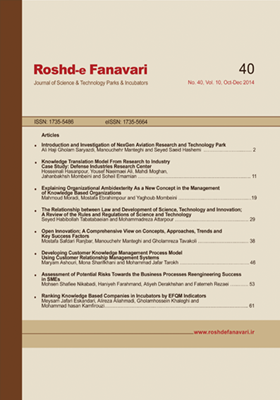Explaining Organizational Ambidexterity As a New Concept in the Management of Knowledge Based Organizations
Subject Areas : Technology Development Infrastructures and Supporting organizationsMahmod Moradi 1 , Mostafa Ebrahim pour Azbary 2 , Yaughob Mambini 3 *
1 -
2 -
3 -
Keywords: Ambidexterity, Sequential Ambidexterity, Structural Ambidexterity, Contextual Ambidexterity, Knowledge Based Organizations.,
Abstract :
Organizational ambidexterity as a new managerial construct has been proposed in recent years. This concept is entering into the field of technology, innovation, entrepreneurship, organizational behavior, organizational design and strategy. Ambidexterity is viewed as a tool to gain sustainable competitive advantage, business performance and firm survival. It can be achieved through organizations’ endeavor to exploit and explore available opportunities. Many companies have comprised the view that to function effectively in today’s economy, it is indispensable to become a knowledge-based organization. The Knowledge Based Organizations created in order to synergistically exploit science and wealth, develop knowledge based economy and strongly depend on innovation as a source of the competitive advantage. In this article, by systematically reviewing related literature, we have tried to illuminate the notion of ambidexterity. Structures and forms of organization ambidexterity in knowledge based organizations were revised and its role to improve the performance of knowledge based organizations has been clarified. Paper suggested that knowledge based organization through ambidexterity in management, structure and process could guarantee its survival in today’s dynamic environment. In the paper, organizational ambidexterity definition in explained. Furthermore, the necessary that knowledge based organization must pass on toward ambidexterity in explained. The sequential ambidexterity, structural ambidexterity and contextual ambidexterity as foremost typologies for ambidexterity is discussed.

